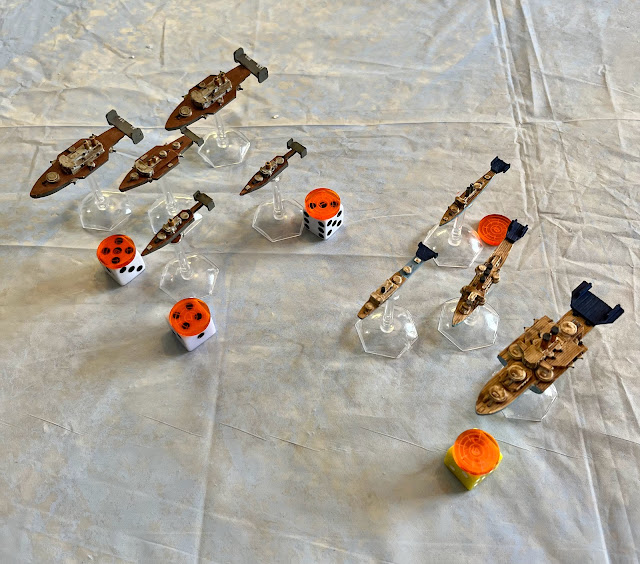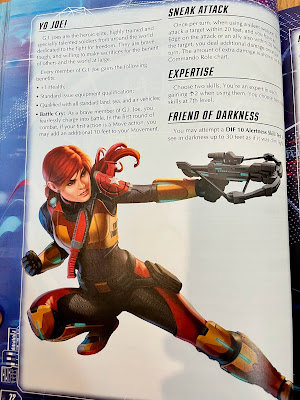I am a relative newcomer to Legend of the 5 Rings. I have been familiar with it as an Intellectual Property for a long, long time but never really spent much time with it. However, I listened to an actual play of one edition or another on the Happy Jacks Podcast, and was intrigue by what I had heard. I listened to a few more podcasts and was even more interested. Then, one day I was at the Half-Price Bookstore and saw a copy of the Third Edition rulebook. I bought it.
Since then, I have managed to design a short campaign called "One Year in Rokugan" that was edition and stat block agnostic but based on my 3rd Edition knowledge. After all, there are 5 editions of the game! If you are part of my Patreon, you can find this campaign available there for free as a PDF. I have managed to play through the campaign using 3rd edition rules, and we all had a lot of fun. It was a huge difference from our normal D&D 5E games, and I enjoyed introducing the world of Rokugan to my players.
After that enjoyable campaign, there was an interest in updating from 3rd edition to 5th edition. I myself was curious about the differences, but had put off buying it. I all ready had 3rd edition, and figured there was no great need to update to the "newest". However, as I learned more about the new edition the core mechanics seemed markedly different than the AEG versions of the game I owned.
Therefore, with some hesitation; I acquired a copy for myself. Keep in mind Legend of the 5 Rings: 5th edition is NOT the same as Adventures in Rokugan; also by Edge Studios. Adventures is a skin for using Rokugan in D&D 5E. Legend of the 5 Rings: 5th Edition using its own system based on the Fantast Flight Games Genesys system. Genesys is used with games like Edge of Empire. It will be interesting to see where this game maintains and differs from the L5R I am familiar with.
So, let us don our Daisho and prepare to serve our Daimyo.....
 |
| The core of L5R..... the dinner party! |
Things I Liked
Rokugan is a very cool place, and it offers RPG opportunities that other games do not emphasize in the same way. I find it very hard to imagine having a "Murder Hobo" campaign in Rokugan. Can it be done? Probably someone has, but it seems very rooted in a fantastical feudal Japanese/Asian culture infused world with a strict culture of law, order, and society; that doing "Murder-Hobo" seems challenging and completely missing the point of it all. There is so much possibility for story-telling and interacting in the world outside of what one normally sees in a D&D 5e game.
The game does a good job trying to introduce the player to this world. The background and the mechanics do a better job creating this in game than the 3rd Edition rules. They also explain the "structure" of society, Bushido, and the Major/Minor clans very quickly and easily in the opening of the book. It is a good primer for players new to the setting and ideas of Legend of the 5 Rings. A point of order is that in these rules the Mantis Clan is still a minor clan. In addition, the Yazuki family is not split between the Crane and Crab clans.
The Strife System that can then force a player to react emotionally to remove Strife is an innovation that fits nicely into the world of Legend of the 5 Rings. Various families, clans, and roles can than unmask, gain, or utilize strife in different ways. This added mechanical factors that before were more "role-playing" elements of previous editions. This edition really helps create mechanics for Honor, Glory, and emotion versus duty that previous editions had; but struggled to mimic mechanically.
The game has dispensed with the ability scores that make up a ring. Instead, the ring and skill score is what matters. The player gets to choose which Ring they wish to approach any skill check with, and each skill has a potentially different result/advantages/disadvantages when using that ring. Therefore, the character has to decide which approach they are using Narratively before determining the results of checks. This is a cool approach that leads to a lot of narrative nuance, but the downside is that there are a lot of interactions the GM may have to keep in mind. There is a helpful table breaking down skill groups and potential approaches on page 144.
All the Katas, Monk abilities, and magic is grouped together into a single category called techniques. Certain schools only have access to certain techniques. However, mechanically almost all techniques work the same. This is a wise way to streamline a lot of the nuances from the previous editions.
The "fail state" in the game is not always death. There are a number of conditions that can be inflicted, including social/psychological ones.
In the GM section, there is a nice break down of potential obstacles based on whether they are martial, intrigue, investigative, explorative, etc. This gives GMs solid guide lines for creating obstacles within each pillar. There is also a good discussion about raising the stakes, duty, and conflict with Bushido for the players to have to navigate. These are very helpful in helping a GM create the right "feel" for the game.
Things I Did Not Like
The FFG Genesys system uses proprietary dice, and these dice are not easy to source at the FLGS. That is a major downside to this game. There are online dice rollers that you can use instead.... for now. I really do not like when a game uses proprietary dice for this exact reason, as it is an additional barrier to entry, makes the system seem "hard to learn", and can limit the life expectancy of the product's shelf life. The game can only be played when you have the right dice, and there will be a time when you can not get them. Plus, it just smacks of Game as Product design and marketing, which I am adverse to. All that said, there is a chart that allows you to convert standard d6 and d12 into use..... which makes me question the reason for custom dice even further!
In addition, this game seems to streamline the Family --> School approach. It looks like each family also has their own school to go with them. I like that there are more, varied schools BUT I do not like that they seem so closely aligned with the Family. There is nothing stopping you from changing up Family and separating it from School but it does not seem like there is much incentive to do so. That makes me feel like this is a Class/Level system stripped down and hidden in a different wrapping. I am not a fan of that.
There is a lot of "If This, Then That" approaches to the game. In fact, it is one of the central decisions a player needs to make about their character. How do they approach problems and what Rings do they emphasize in order to handle them. This is great for Players, but there is a heavy burden on the GM to know what the various approaches lead to, and when to use different skills for different scene types. The game has a simple Roll and Keep unifying mechanic but the potential outcomes look cumbersome. I imagine this game would require a very skilled and knowledgeable GM, making decisions on the fly, or lots of consulting the rulebook to know what to use when.
A petty concern, but in the equipment section there are a lot of unfamiliar weapons to the average reader. Therefore, pictures of all of them would have been really helpful. I don't really know the difference between a Dao and a Gao.
Meh and Other Uncertainties
The game has taken a much more Narrative bend than previous editions. The focus is on creating and telling the stories of the character's and imitating samurai dramas. The rules are pretty open that Narrative comes first, and the game has been structured to lean in that direction. This is a change from previous editions, where the narrative was important but was more "mechanically" driven. This edition leans the other way and is a change for those coming from previous versions of the game.
The game has a well-developed section abut Scenes. Here it lays out the differences between narrative, downtime, and conflict scenes. It further goes into detail about how to handle Conflict scenes such as combat, intrigues, Duels, and Mass Battle. This is basically a "How to play the game" section and is the heart of the rules. It is nice that the intrigue rules cover Social interactions, which is often missing in other games. The Scene approach gives a lot of structure of "what can be done when" for the game and helps players and GMs focus on what is appropriate and when it is useful.
The rules cover a wide variety of situations that an RPG group can utilize. However, the game does not have a strong exploration element built into the rules in the traditional sense. One could argue that the exploration is more social in this game than in the geographic realm. The exploration is learning how the society works and how to operate effectively in it.
In addition, the key ideas about how to play the game are not introduced until Chapter 6. Therefore, it can be challenging to get a good feel for how all the Character Creation stuff goes together to actually play the game.
The game still uses the 20 Questions model for building a character. This is a tried and true model, and this book goes into even more detail than the 3rd Edition one does. However, keep in mind this is still mostly background and gives structure to your character. It touches somewhat on mechanics, but is mostly for role-playing support. It helps you know how to role-play your character. Therefore, it is more art than science.
Final Thoughts
This is a well-fleshed out world and society to game in, and that in itself can bring its own challenges and a very different experience. You are not some quasi-legal adventurer out on the fringe of civilization, you are a member of the hierarchy, a noble, and bound by a strict code of conduct to yourself, your clan, and your family. This game is not about freedom of action, it is about constriction and playing and working within those confines. That alone makes it a novel RPG experience and one that is not for everyone.
In addition, this is a dense set of rules. I recommend playing this game with experienced role-players. This is not a beginner RPG by any stretch. It is challenging and nuanced, with a relatively high degree of mastery needed to play to its full advantage. That said, I look forward to giving it a shot with my group at some point in the future.



































